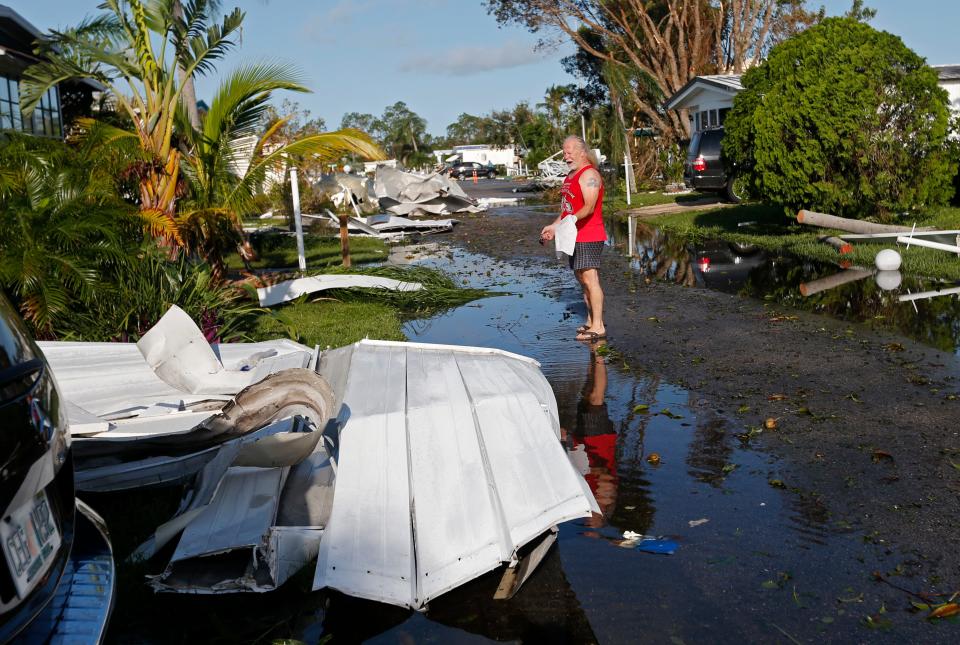It may be time for an insurance checkup. How soaring costs may leave you underinsured
The probability that you're paying more for less is clear these days at the grocery store or in a restaurant, but one place it may not be as obvious is in your insurance policies.
On average, homeowners’ premiums are up 12.1% compared to a year ago, according to a Policygenius analysis, released in July, of internal policyholder data.
Nationally, car insurance rates are increasing by an average of 4.9%, according to approved rate filing data from S&P Global Market Intelligence.
But like everything else – from toilet paper or a box of cereal to a meal from your favorite takeout place – just because you’re paying more, doesn’t mean you’re getting more.
“There might be a big surprise for people who get their cars wrecked,” said Marty Ellingsworth, executive managing director of P&C Insurance Intelligence at J.D. Power. “They’ll be surprised at how much they get for it or if they went to get it fixed, that it costs more than the insurance covers.”
Costly insurance: A double whammy for consumers: Home and auto insurance rates are set to jump in tandem
Higher materials prices : Flipping or renovating a house? Expect to pay more for these materials and services
Why does insurance cost more?
Inflation, primarily.
Homeowners and auto insurance is largely based on replacement or repair costs. This year, prices of almost everything, including lumber, concrete, screws and even the wages of those processing claims, building, or repairing have risen sharply, adding to insurance prices.
Increasing catastrophe losses and natural disasters are also affecting homeowners' rates. There were 97 natural disasters resulting in $92 billion in insured losses last year, up from 92 events totaling $74 billion in losses in 2020, according to the Insurance Information Institute.
From May 2021 to May 2022, homeowners who saw price increases paid on average $134 more, according to the Policygenius analysis.
In autos, shortages, reckless driving, and higher medical costs if people are injured in a crash are also boosting rates. The price of new cars and trucks rose by 10.4% between the 12 months to July, while used cars and trucks increased by 6.6%, easing off double-digit increases earlier in the year. Annual health care inflation rose 4.8% in July, the fastest pace in a year.

How does inflation affect my coverage?
Since the higher premiums have nothing to do with coverage changes, your limits are the same. That means come claim time, you may find yourself underinsured.
For example, the average bodily injury liability payout in 2020 was $20,235 per auto accident, according to III. “Because injury-related costs have increased 5.1%, the same accident could cost $21,267 in 2022,” Cate Deventer, Bankrate.com analyst, said.
People often drop collision coverage, thinking their used cars may only be worth $5000 or $10,000. Think again, Ellingsworth said. Used car prices have soared because of the lack of new cars available due to the semiconductor shortage, that car may be worth $20,000 or $30,000 now, he said.
How do you decide how much coverage you need?
For car owners, shop for your car to find out what it’s worth now, Ellingsworth said. That can help you decide if collision insurance is worth it to you.
“If you own a home and haven’t had your home appraised in 5 to 10 years, maybe have it looked at again,” he said.
Consider an insurance-to-value inspection, which will tell you how much it’ll cost to rebuild your home. Also, consider speaking to an insurance representative about what the prevailing losses might be in your area to gauge risk. Those should help give you an idea of how much insurance coverage to consider, he said.
Used cars surge: Used cars cost 40.5% more than last year as gas prices rise. New car prices also climbing
Climate strains: Weather whiplash? Intense flooding in drought-stricken Texas kills woman whose car was swept away
Are there other things I should consider?
Yes, lifestyle changes.
"Most people are in a hybrid or remote work model, so they’re not having to drive as much,” said chief growth officer Linh Ho at Zelros, which provides artificial intelligence-based software to businesses, including insurance companies. Lower mileage can lower auto insurance premiums.
Don’t forget the renovations you may have made during the pandemic. “If renovations included security cameras, that can lower costs of homeowners insurance,” Ho said.
Home improvements: 7 home renovations to make your house safer in severe weather
College living costs: It's not just tuition and fees: College students are facing increasingly high rent prices, too
Parents who just sent a kid off to college should also check their insurance coverage. College kids with cars need insurance, she noted.
“They may also need dorm or rental property insurance if the child’s there and has a new laptop, iPad and phone and maybe, a gaming system,” she said. “Do you add that to your policy or buy a separate one?”
All these things should be considered to ensure adequate coverage and peace of mind, analysts say.
Medora Lee is a money, markets and personal finance reporter at USA TODAY. You can reach her at mjlee@usatoday.com and subscribe to our free Daily Money newsletter for personal finance tips and business news every Monday through Friday morning.
This article originally appeared on USA TODAY: What happens to insurance during inflation? Here's what to know.
